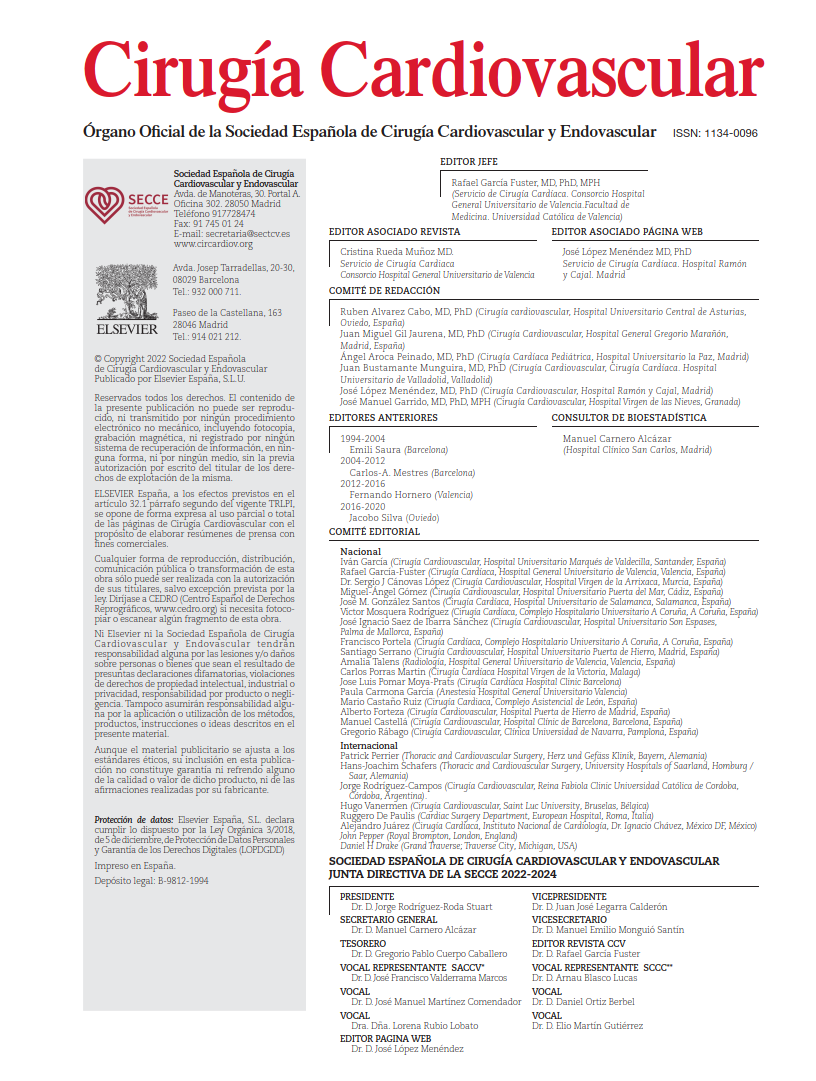
The size matters: assessment of different methods for evaluating donor-recipient mismatch and their prognostic significance in pediatric heart transplantation
This retrospective study, based on data from the international Pediatric Heart Transplant Society registry, evaluates donor-recipient size mismatch using different parameters and its impact on 1- and 5-year graft survival and post-transplant morbidity.
Bioprostheses in the current era
A retrospective study of a national database in Taiwan that examines durability outcomes for all bioprosthetic valves implanted in the aortic and/or mitral position from 2001 to 2017.
Recovering the Flow: Functional Approach to Aortic Wall Pathophysiology to Predict Risk of Disease Development
Non-systematic review calling for a paradigm shift in the conceptualization of aortic pathology, incorporating functional studies of aortic flow linked to the occurrence of both chronic and acute pathologies.
Current Management of Post-Infarction VSD: An Established Paradigm Shift?
This article examines the findings from a survey conducted across 39 European centers regarding current clinical practices in the management of post-acute myocardial infarction (AMI) ventricular septal defect (VSD).
Chronic Type A Aortic Dissection: Durable Repair with Acceptable Risks?
This article examines the characteristics and postoperative outcomes of patients who underwent surgical intervention for chronic type A aortic dissection (over 60 days post-symptom onset) between 1990 and 2021.
Coronary Disease Revascularization in Stable Patients: Repeating Past Mistakes
Position Statement and Commentary by STS and AATS on the 2023 ACC/AHA Chronic Coronary Syndrome Revascularization Guidelines.
Is a Bentall or Wheat Procedure Recommended for Mild-to-Moderate Aortic Root Dilation?
A retrospective analysis by the Mayo Clinic compares long-term outcomes between the Bentall and Wheat procedures in patients with an aortic root diameter of 55 mm or less.
Pulmonary vein stenosis in adults: rare, but it exists
Review of JACC on the study and management of acquired forms of pulmonary vein stenosis in adults.

